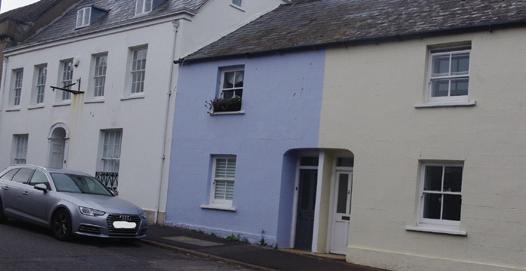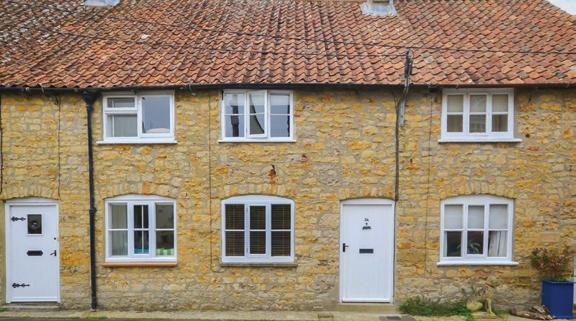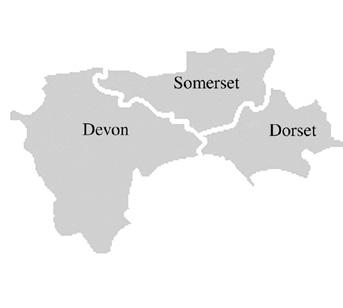
4 minute read
Property Round Up By Helen Fisher
What can I buy for £300,000 By Helen Fisher

Advertisement
BRIDPORT £295,000 BEAMINSTER £250,000
A Grade II listed 3 bedroom Edwardian house, recently updated. Originality and charm throughout inc: exposed wooden floors, cast iron bath, wood burning stove and free-standing vintage kitchen units. A glorious, very long garden divided into sections with water feature, summerhouse and timber workshop.
Kennedys Tel: 01308 427329
A 2 double bedroom Grade II listed cottage presented to a high standard throughout. A light filled sitting room with window seat and attractive fireplace and wood burning stove. Modern kitchen with pantry cupboard. Family bathroom with large walk-in double shower. Low maintenance enclosed rear garden with decking area and brick built shed.
Parkers Tel: 01308 420111


COLYTON £300,000
A 3 bedroom, end of terrace house built approx 10 years ago and benefitting from good insulation, heating and glazing. With an attractive fitted kitchen and family bathroom with jacuzzi spa bath. Lovely far-reaching countryside views. Rear patio garden with shed and large front parking area for 2 vehicles.
Gordon & Rumsby Tel: 01297 553768

UPLYME £295,000
A detached character cottage of about 200 years old - now requiring complete renovation. With 3 bedrooms, family bathroom and reception room with wood burning stove. Stone walled front garden with a variety of mature shrubs and trees. Plus summerhouse and outside storage space.
Martin Diplock Tel: 01297 445500 MAIDEN NEWTON £300,000

Attractive Victorian family home, 4 bedrooms walking distance to village amenities & countryside. Beautifully presented throughout with many period features. Reception room with wood burning stove and original flagstones. Kitchen/diner with slate flooring, exposed brickwork and beams. Private, enclosed large rear garden to enjoy the evening sun.
Symonds and Sampson Dorchester Tel: 01305 261008

PORTLAND £269,000
A Grade II listed 2 bedroom cottage arranged over 3 floors with many original features. Inc: sash windows, wooden beams, Portland stone walls and fireplace. Light filled, modern kitchen with door to the rear walled garden. With a variety of shrub and tree borders, stone patio area and hot tub.
Symonds and Sampson Poundbury Tel: 01305 251154
Anew report mapping out options for Dorset to become net zero by 2050 has been published by Dorset Local Enterprise Partnership (LEP). Set against a national net zero agenda, the Decarbonising Dorset report identifies an array of investment opportunities, including those bespoke to Dorset.
Dorset’s Local Industrial Strategy, developed by Dorset LEP with local stakeholders, agreed to tackle climate change head-on and develop a county which is energy resilient, utilising local renewable energy sources.
The report highlights that Dorset is a unique microcosm of future energy opportunities, boasting significant potential in all key low carbon energy sectors, from solar PV and offshore wind to hydrogen and energy storage, as well as having potential for onshore wind, marine energy, nuclear and bioresource. The historic onshore oil and gas production in the region, and salt caverns underlying Portland, offer opportunities for hydrogen, carbon and energy storage that are unique in the South of England.
Cecilia Bufton, Dorset LEP Chair, says: ‘This document is Dorset’s guide to achieving net zero emissions by 2050. It includes exciting opportunities to decarbonise Dorset and provide significant economic and social benefit for the county at the same time—low-carbon energy options ready for investment and immediate success.
‘Our strategic vision for Dorset aligns with the government’s goal of national net zero emissions by 2050. We have shown how Dorset can do it, now we must work with local players to turn opportunities into action!’
Dorset’s demand for electricity is expected to more than double by 2050. To meet this demand, the Committee on Climate Change, the UK’s independent adviser on tackling climate change, has estimated that renewable energy generation capacity needs to quadruple.
According to this report from Dorset LEP, renewable energy solutions suitable for Dorset include solar, wind, hydrogen, bioenergy and nuclear. Solar presents a major opportunity for the county thanks to large areas of lower grade agricultural land. Meanwhile, hydrogen energy generation could benefit from storage within Dorset’s salt caverns, and marine-sourced heat pump projects can aid decarbonising heating.
As well as identifying clean energy opportunities, this report also highlights how improving the energy efficiency of buildings, moving to a low-carbon transport system, and exploring flexible energy network solutions, will all be key to achieving net zero. Electric vehicles, for example, make up just 0.3% of total cars registered in Dorset—developing infrastructure across the county to support these initiatives will be a crucial step forward.
Read the document online at www.dorsetlep.co.uk/ dorset-net-zero and stay up to date with all progress on Dorset’s net zero ambition on Twitter and LinkedIn using #DorsetNetZero.











